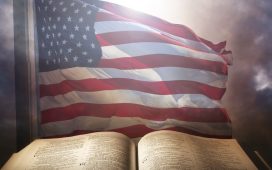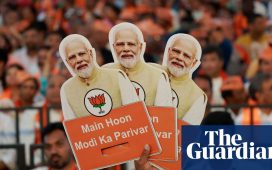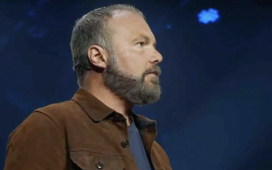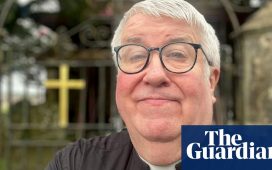New Scientist, the weekly founded in 1956, owes its continuing success to Bernard Dixon, its editor from 1969 to 1979. Thanks to his own blend of curiosity, enthusiasm and scepticism, he struck a successful – and at the time, unique – balance between accessible science reporting, analysis of new technology and scrutiny of the relationships between science, government and society.
Combined with a good dose of irreverent humour and covers that drew on the best of contemporary graphic design, this formula saw the magazine’s circulation almost double over the decade of Dixon’s tenure and provided a model for his successors.
“Nothing was sacred, as long as it was about science,” says Michael Kenward, the news editor under Dixon, who has died aged 82, and editor after him. It was on Dixon’s watch that the magazine began seriously to cover the impact of human activity on the environment.
He made science policy a priority, sending Kenward and others to sit in select committees and interview ministers, and working with the Labour MP Tam Dalyell on the weekly column Westminster Diary, which he launched in 1969 and that Dalyell continued to write for 36 years.
At the same time, Dixon commissioned Bill Tidy’s Grimbledon Down strip, satirising secret government research laboratories, and pocket cartoons from David Austin, whose work later appeared in the Guardian. He threw famous office Christmas parties, where you were as likely to bump into Doris Lessing as the president of the Royal Society.
“Under Bernard’s leadership, New Scientist became authoritative and entertaining, the voice of science that everyone could understand,” said Lawrence McGinty, another Dixon recruit, who specialised in industrial health and safety and went on to become science and medical editor for ITN.
While he gained the trust of the scientific establishment, Dixon never allowed the publication to become the house magazine of British science. He recruited and nurtured a staff of mainly young and vociferous journalists, many of whom carried his trademark rigour and integrity into the national news media.
Dixon’s approach had a national impact. In the mid-1960s the government public health scientist ES “Andy” Anderson told him that farmers were feeding antibiotics to animals indiscriminately to prevent disease or as growth promoters, and that this was contributing to widespread antibiotic resistance in bacteria that infected humans. Dixon used his training in microbiology to raise the issue with GPs and the wider public. A government committee under Michael Swann concluded in 1969 that antibiotics of therapeutic value to humans should not be used in agriculture for growth promotion. The government implemented the report, although in Dixon’s view it did not go far enough, and he continued to campaign on the issue.
On a lighter note, a 1974 investigation by Dixon and his technology policy editor Joseph Hanlon exposed the spoon-bending Uri Geller as a clever prestidigitator rather than someone with paranormal powers. While some colleagues thought the topic frivolous, Dixon was aware that several respected scientists and even the journal Nature appeared to have been taken in. Both he and Hanlon started with an open mind, but their rigorous search for evidence found nothing – while Geller split his trousers in their presence as he attempted surreptitiously to bend a key on the metal frame of a chair.
Dixon was born in Darlington, County Durham, the only child of Ronald Dixon, a sales assistant in an electrical shop, and his wife Grace (nee Peirson). Dixon spent many childhood hours building electrical devices such as a crystal radio set.
At 16, while at Queen Elizabeth grammar school in the town, he suffered a haemorrhage in his lung, and his experience of hospital treatment led him to choose a biology degree. He went to King’s College in Newcastle upon Tyne, then part of Durham University and the forerunner of Newcastle University, so that he could continue to play the piano accordion with the Scottish dance band he had founded in his teens.
After a PhD and a year’s further research in microbiology, he successfully applied to become an assistant editor on World Medicine, a new magazine for GPs launched in 1965. He followed its editor, Donald Gould, to New Scientist in 1968, succeeding him as editor the following year.
Dixon left New Scientist in 1979, partly because of his frustration at having to fight the magazine’s parent company, IPC, over budgets: New Scientist was extremely profitable but some of the older magazines in the stable were less so.
Choosing instead a freelance lifestyle, he focused on his own books and a multitude of other editorial assignments, mostly for specialist scientific organisations. His 1973 book What Is Science For? had brought his trademark humanity and scepticism to bear just at the moment when disillusion over the promise of technology was coming to a head. Later titles included Beyond the Magic Bullet (1978), a prescient exploration of the fallacy that there is a pill for every ill.
He worked indefatigably behind the scenes on committees including the British Association for the Advancement of Science (now the British Science Association), the Committee for the Scientific Investigation of Claims of the Paranormal (now the Committee for Skeptical Inquiry) and the Council for Science and Society.
He was also a considerable collector and dealer in old medical and scientific books. Despite abandoning religious faith in his teens, he had a long-standing interest in science and religion, and convened a debate between the biologist Richard Dawkins and the then archbishop of York, John Habgood, at the 1992 Edinburgh Science festival.
Dixon was surprised and delighted to be awarded an honorary DSc by the University of Edinburgh in 1996. On being told he was being appointed OBE in 2000 he was similarly delighted, but, as he related in an interview for the British Library’s Oral History of British Science, he made it clear that he would not accept it from the Prince of Wales because of his ill-informed statements about the genetic modification of food crops.
As the palace could not guarantee that Prince Charles would not be officiating on the day, he opted instead to receive his medal from the lord lieutenant of Middlesex – through the post in a Jiffy bag.
He remained engaged to the last, bemoaning the “mess of misunderstanding and incompetence at every level” that characterised the UK’s response to the Covid-19 pandemic, but was still confident that “we will get on top of this”.
Dixon married Margaret Charlton, a student at Newcastle when they met, in 1963. They were divorced in 1988. Afterwards he formed a professional and personal relationship with Kath Adams, who had been his secretary at New Scientist, that lasted until her death in 2019.
He is survived by his children from his marriage to Margaret, Jacqueline, James and Stuart, and three grandchildren.
• Bernard Dixon, science writer and editor, born 17 July 1938; died 30 October 2020




